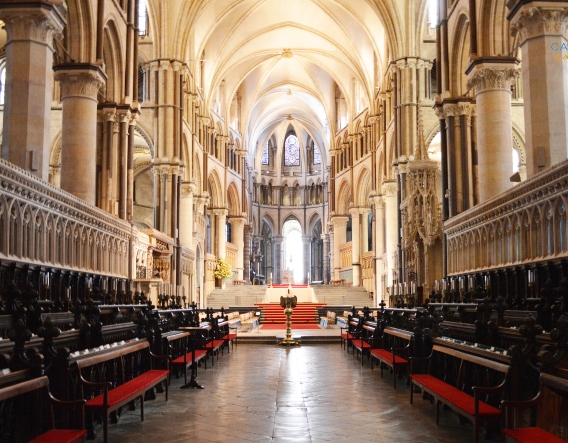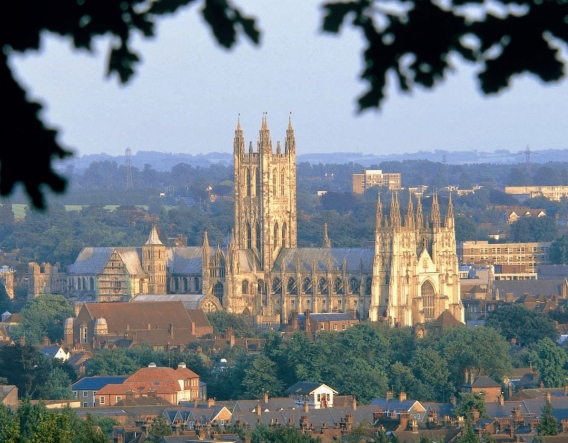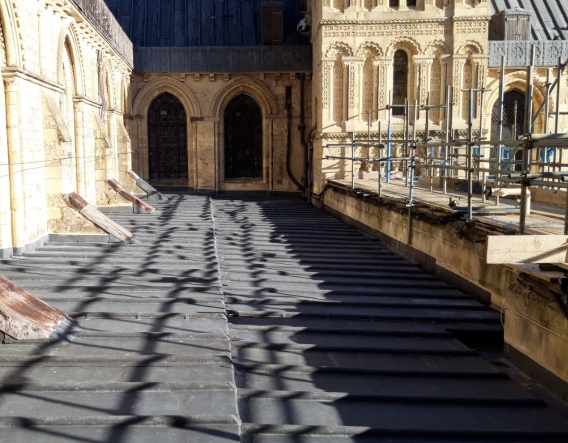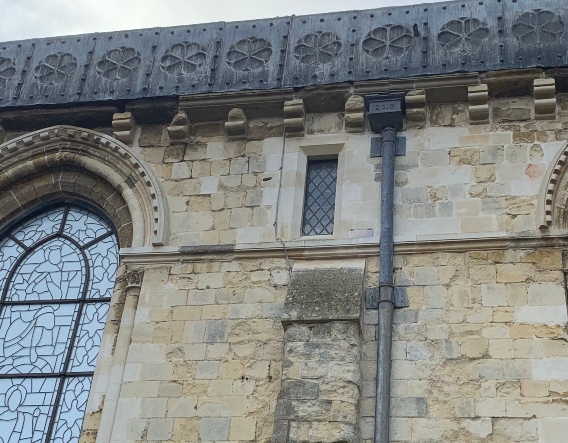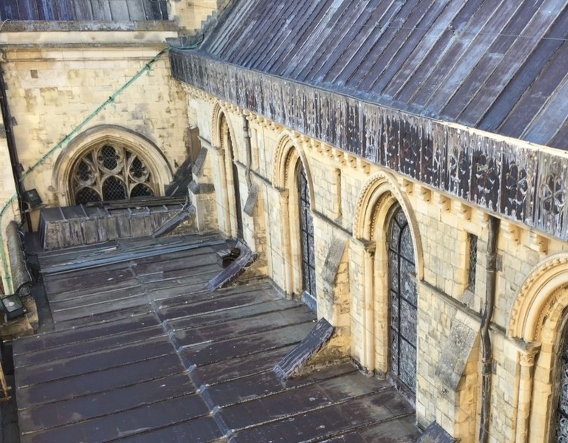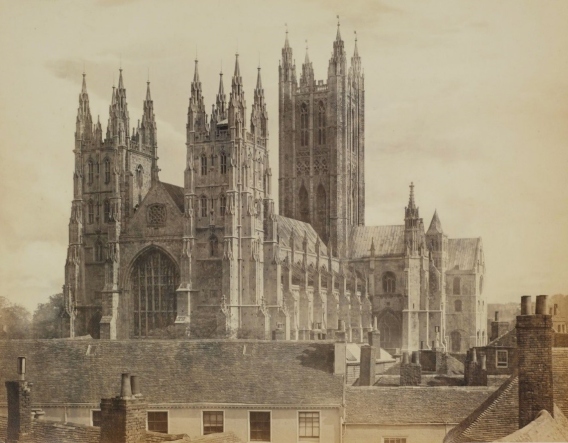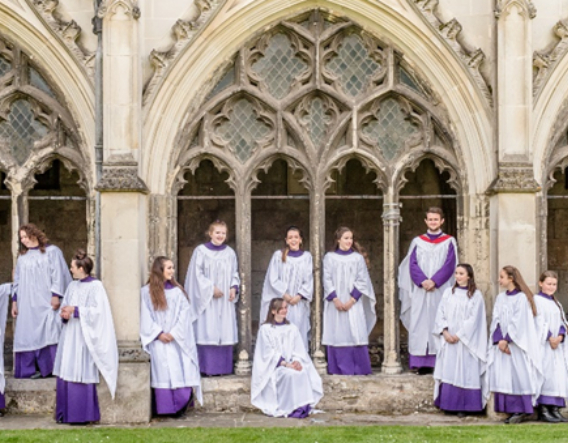Founded in 597 by St Augustine, Canterbury Cathedral is a place of global significance – historically, artistically and spiritually. As the Mother Church of the Anglican Communion and the seat of the Archbishop of Canterbury, Canterbury Cathedral is regarded as a spiritual home by 85 million people.
Ignited by the martyrdom of Thomas Becket (1170), the Cathedral is a place of pilgrimage. For centuries, people have come to Canterbury to worship, to find peace, to learn, to marvel at the ancient fabric. Pre-pandemic, close to one million people visited each year. Ordinarily, the Cathedral is a place for both international and local communities to gather at 2,500 events each year – Royal occasions, enthronements of Archbishops, concerts, lectures, exhibitions and award ceremonies including graduations. Again, in normal circumstances, more than 200,000 schoolchildren and university students are welcomed every year. The Cathedral is a major employer – 700 staff and volunteers ensure that this special place is open, again, pre-pandemic, 365 days a year.
| EB and Project Number | 331293/2724 | LCF Funding | £99,907 |
| Project Postcode | CT1 2EE | Total Project Cost | £372,884 |
| Object | E |
Built and rebuilt over 1,400 years by the most talented craftspeople in Europe, Canterbury Cathedral is an architectural treasure - a UNESCO World Heritage Site and listed in Historic England’s Heritage at Risk Register. The Cathedral is home to 1,200 square metres of stained glass that includes Britain’s oldest stained glass, the 12th century Ancestors of Christ – loaned to the J Paul Getty Museum, Los Angeles (2013) and the Metropolitan Museum of Art, New York (2014). Indeed, one of Canterbury Cathedral’s Miracle Windows is currently on loan to the British Museum for their Thomas Becket exhibition - Thomas Becket: Murder and the Making of a Saint (22 April and 22 August 2021). The Cathedral is a world leader in heritage conservation offering training in stonemasonry, stained glass, leadwork, carpentry, textiles and paper conservation. The Cathedral’s Archives and Library have cared for artefacts and books since Anglo-Saxon times – its collections date back to the 8th century and make up an extraordinarily rich resource.
The Cathedral’s choral tradition began in the 6th century with the sound of the monastic office of St Augustine’s community. Today, the Cathedral is host to a vibrant music programme - enriching worship and inspiring people around the world.
LCF project objectives
The Cathedral’s Quinquennial Inspection Report (QIR 2017) stated that the Cathedral Quire was suffering from water ingress, lead corrosion and beetle infestation. This had led to slipped masonry, open joints and failed flashing. The Quire’s soaring Purbeck Columns also required urgent attention. The QIR 2017 marked these repairs as critical and demanding attention within the next two years.
The LCF project objective was to restore the fabric of the Quire, and in particular to undertake roof work to ensure that the 12th century Quire remained a safe and accessible environment for worshippers; for local, national and international musicians to perform in.
Project details and outcomes
The Quire of Canterbury Cathedral has claim to be the earliest Gothic structure in Britain. Its style was a direct import from France and changed the face of English medieval architecture.
“The coherence and almost perfect homogeneity of its choir [sic], east transept, unfinished eastern tower, and Romanesque side chapels are still evident and these were seen at the time of inscription as one of the most beautiful architectural spaces of Early Gothic art.” – UNESCO
Set at the east end of the Cathedral, the Quire was extended by Prior Ernulf (b. 1090) and rebuilt in the late 12th century following catastrophic fire to the mostly-timber structure. This early Gothic reconstruction was overseen by French architect, William of Sens. Sens created England’s first flying buttresses at Canterbury - one of the most influential feats in English architectural history. They survive today above the North Quire Aisle and Clerestory. The latter houses some of Europe’s oldest stained glass (12th century) - protected from 17th century iconoclasts by its lofty position but now suffering dreadful damage through pollution and constant exposure to the elements.
The conservation of the Quire was intricately linked to the conservation of the Cathedral’s Great Organ (sited in the Quire). Built in 1886 by Henry Willis, the Organ was in an appalling state – its failings included keys falling off the console. Plans were put in place to rebuild the Organ as close to its original specification as possible.
To better balance the instrument’s sound, the console was to be re-sited and pipes re-ordered across the North and South Triforium. Works were carried out by trusted organ builders, Harrison & Harrison, alongside the Cathedral’s expert team of craftspeople.
It was imperative that the conservation of fabric in the Quire was undertaken and indeed, undertaken in tandem with the Organ work. Left unaddressed, the failing fabric of the Quire would have seen damage increase exponentially. The severity of the failing fabric meant that repairs had to be carried out ahead of the installation of an enhanced Organ - the risk of damage to the new instrument being too high and the cost of retrospective repairs too great. Addressing urgent fabric repairs whilst the Organ was removed and off-site for restoration was a once in a lifetime opportunity for unlimited access to hard-to-reach areas, as well as the ability to install new hatches to simplify future maintenance.
The repair and restoration of the South Quire Tribune roof and the Quire gutters was key to ensuring that the 12th century Quire was made safe and weather-tight. Thanks to the generosity of Viridor Credits Environmental Company, the roof and gutters are now robustly repaired and restored – able to protect the beautiful Quire below.
Canterbury Cathedral Trust's application to Viridor Credits stated that the critical restoration and repair works to the Cathedral's South Quire Tribune roof and gutters would begin in March 2019 and complete in March 2020. In consultation with ecologist Nick Tardivel, the start date for works was delayed to avoid disturbing a pair of peregrine falcons that were nesting in close proximity to the roof. No eggs were laid and so works were able to begin in June 2019.
There were further challenges. Opening up the roof space revealed a greater repair need for the timbers. Mark Sharratt, former Director of Works, advised that the scale of repair to the roof had increased significantly - all lead on the South Quire Tribune roof had to be replaced (approximately 40% of the lead was to be replaced originally). To avoid the great risk of a fire resulting from hot-works in situ, the lead was fixed using a traditional “bossing” technique – a necessary but labour-intensive change in approach. In addition, works had to co-exist at a tremendously busy time for the Cathedral – Christmas 2019, followed by the voicing of the new organ in January. The project completed in February 2020.
Head of Fundraising at Canterbury Cathedral, Joanna Luck said:
"The Quinquennial Inspection Report 2017 identified grave problems with the Quire including water ingress and lead corrosion.
Thanks to the great generosity of Viridor Credits, the Quire that holds some of the nation's most precious fabric will stand safe and weather-tight for generations.
Our great thanks to all at Viridor Credits – your longstanding support means so much to all of us at Canterbury.”
Gareth Williams, Operations Manager for Viridor Credits Environmental Company, said:
“It’s vitally important to protect and conserve our wonderful heritage. Viridor Credits was excited to, once again, be involved with the great work being carried out at Canterbury Cathedral.”


